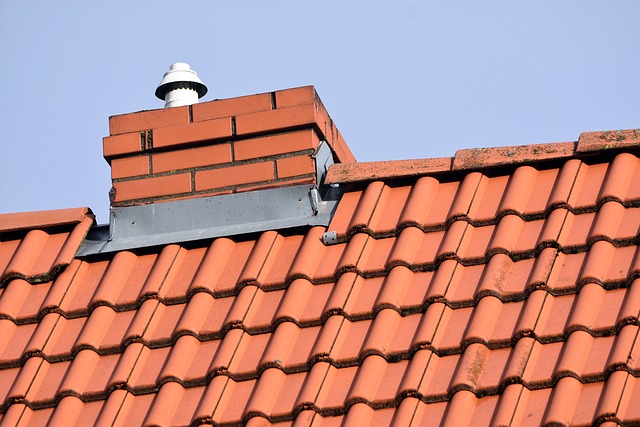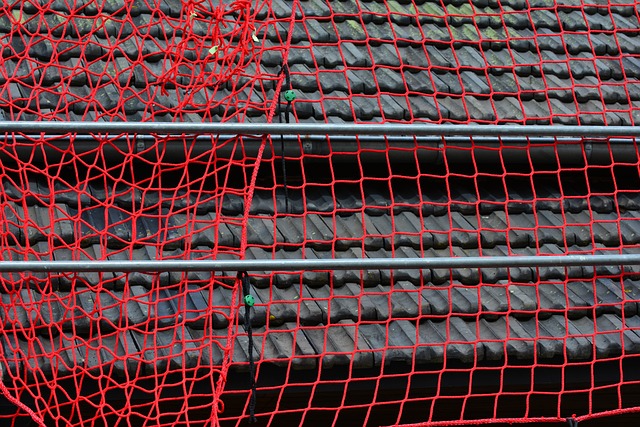In Houston's humid and rainy climate, maintaining the integrity of a building's roof flashing is crucial to prevent water damage that can cause extensive property damage. Homeowners and property managers should prioritize regular inspections and timely repairs of these metal components, which direct water away from critical junctions where the roof meets walls, chimneys, and vents. Given Houston's environmental conditions, repairs should be carried out using durable materials to withstand humidity and corrosion. Roof repair Houston professionals offer expert services to address flashing issues, ensuring efficient water flow and protecting your property against moisture intrusion. By adhering to a maintenance schedule and utilizing the skills of local roofing experts, you can effectively safeguard your home's structure and foundation, as well as its interior from potential water damage, thereby prolonging your roof's lifespan in the challenging Houston climate. Regular upkeep by these specialists is essential for the long-term protection of your residential property.
Roof flashing is a critical component of a home’s defense against water intrusion, particularly in Houston’s climate where severe weather can test any structure’s resilience. This article delves into the essentials of identifying and addressing roof flashing issues to prevent costly water damage. With a focus on practical solutions tailored for Houston homes, we provide a comprehensive guide to repairing roof flashing effectively. Moreover, we outline preventative measures and maintenance tips designed to safeguard your property from the relentless rain and high humidity that characterize this region. By understanding the importance of proper flashing repair and upkeep, homeowners in Houston can maintain a dry and secure dwelling throughout the year.
- Identifying and Assessing Roof Flashing Issues for Effective Repair in Houston
- Step-by-Step Guide to Properly Repairing Roof Flashing in Houston's Climate
- Preventative Measures and Maintenance Tips to Safeguard Your Houston Home from Water Infiltration
Identifying and Assessing Roof Flashing Issues for Effective Repair in Houston

In Houston’s climate, where intense rainfall is common, ensuring the integrity of a building’s roof flashing is paramount to prevent water infiltration and subsequent damage. Roof repair Houston experts emphasize that identifying and assessing roof flashing issues are the first critical steps in effective repair work. Flashing, the metal pieces that direct water flow away from critical points where the roof meets walls, chimneys, and vents, can deteriorate over time due to weather exposure, foot traffic, or settling of the building structure. Homeowners and property managers should vigilantly inspect these areas for signs of compromise, such as rust, gaps, or lifting, which can serve as entry points for water. Utilizing high-resolution imagery from drones or safely climbing onto the roof, one can spot these issues early on, minimizing potential damage. Once identified, a thorough assessment is necessary to determine the extent of the repair required. In Houston specifically, where the combination of heat and humidity accelerates material degradation, regular maintenance and prompt repairs are crucial. Engaging with experienced roof repair Houston professionals ensures that all flashing work is done with attention to detail, using appropriate materials and techniques to maintain the building’s waterproof barrier effectively. This proactive approach not only safeguards against costly interior repairs due to water damage but also extends the lifespan of the roof by addressing vulnerabilities before they become significant problems.
Step-by-Step Guide to Properly Repairing Roof Flashing in Houston's Climate

When confronted with water infiltration issues, addressing roof flashing repairs is crucial to safeguarding your Houston property from the relentless rains and high humidity. A proper repair not only extends the lifespan of your roof but also prevents costly damage to the structure’s interior. Here’s a step-by-step guide tailored for Houston’s climate, ensuring your roof repair in Houston is both effective and enduring.
Begin by thoroughly inspecting the flashing areas, particularly where they meet with walls, vents, and chimneys. In Houston’s humid environment, corrosion can be a common issue, so pay close attention to any signs of rust or wear. Remove any existing sealant or tape, clean the area meticulously to ensure a solid bond for new materials. Apply a fresh layer of high-quality flashing cement or a rubberized asphalt coating around the base of the flashing and over the joints. Ensure that this seal extends several inches up the side of the roof and wall to prevent water from migrating behind the flashing.
Once the initial application is set, check for any gaps or seams that may have been missed. In Houston’s climate, where temperature variations are significant, using a flexible sealant can provide additional protection against both thermal expansion and water intrusion. Allow the initial layer to cure as per the manufacturer’s instructions before applying the sealant. Afterward, apply metal flashing tape over the seam for added reinforcement, particularly at vulnerable points like joints and corners. Finish by coating the entire repaired area with a protective caulk designed for high-moisture environments to ensure a watertight seal against Houston’s climate challenges. With these steps, you can effectively repair roof flashing in Houston, guarding your home against water damage and maintaining its integrity for years to come.
Preventative Measures and Maintenance Tips to Safeguard Your Houston Home from Water Infiltration

Regular upkeep and prompt repairs are critical in safeguarding your Houston home from the damaging effects of water infiltration, particularly given the city’s propensity for both heavy rainfall and high winds. One of the most vulnerable spots on a roof system is where it meets other structures—this is where roof flashing comes into play. Flashing directs water away from joints where leaks are most likely to occur, such as where a chimney meets the roof or where skylights or vent pipes penetrate the surface.
To effectively prevent water infiltration, it’s advisable to conduct regular inspections of your roof flashing, especially after severe weather events. In Houston’s dynamic climate, the combination of high heat and occasional storms can loosen or dislodge flashing over time. Homeowners should also consider the use of durable materials for flashing repairs in Houston, such as metal alloys that are less prone to corrosion from the city’s humid environment. Additionally, ensuring proper sealants around the flashing and maintaining clear gutters and downspouts to allow water to flow away from your home are essential steps in preventing water damage. For those in need of professional assistance, roof repair Houston services are well-equipped with the expertise and materials necessary to address any issues with your roof flashing and provide long-lasting protection against water intrusion. Regular maintenance and timely repairs by skilled professionals like those found in roof repair Houston can save you from costly and extensive damage to your home’s structure, interior, and foundation.
Addressing roof flashing concerns promptly is crucial for maintaining a dry and secure home environment, particularly in Houston’s diverse climate. By understanding how to identify and assess roof flashing issues, as detailed in the article, homeowners can effectively address leaks and prevent costly damage. The step-by-step guide provided offers practical solutions tailored to Houston’s unique weather challenges, ensuring that repair work is not only effective but also enduring. Moreover, implementing preventative measures and regular maintenance, as outlined, will help safeguard your property against water infiltration in the long term. For expert assistance with roof repair in Houston, trust the professionals who understand the local climate’s demands and can provide top-notch services for a secure, dry home.
